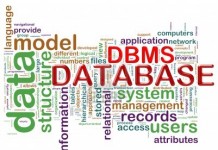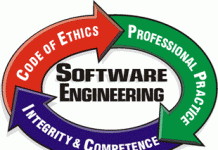Dear Aspirants,
Welcome to the Professional Knowledge Section in Affairscloud.com. Here we are providing sample questions in Computer Networking. It will be useful for the upcoming SBI Assistant Manager(System) and RRB Officer Scale – II(IT Officer) examinations. We have also included some important questions that are repeatedly asked in previous exams.
- ______ manages clients in remote locations where network bandwidth control is required.
A. Secondary Site
B. Central Administration Site
C. Primary Site
D. All of the Above
E. None of the AboveA. Secondary Site
Explanation:
Secondary Site Controls content distribution for clients in remote locations across links that have limited network bandwidth. Secondary sites can send content distribution to other secondary sites. It can Participate in database replication. - Which of the folowing is the top-level site that has one or more primary child sites?
A. Secondary Site
B. Central Administration Site
C. Primary Site
D. All of the Above
E. None of the AboveB. Central Administration Site
Explanation:
A central administration site as the top-level site that has one or more primary child sites. The primary sites can each support secondary sites. It does not accept client assignments. It participates in database replication. - Which of the following manages clients in connected networks?
A. Secondary Site
B. Central Administration Site
C. Primary Site
D. All of the Above
E. None of the AboveC. Primary Site
Explanation:
Primary Site manages clients in well connected networks. Ir requires SQL Server and participates in database replication. - __________is the frequent electronic copying data from a database in one computer or server to a database in another.
A. Database Management
B. Database Replication
C. Database Mirroring
D. All of the Above
E. None of the AboveB. Database Replication
Explanation:
The process of creating and managing duplicate versions of a database is known as Database replication. It is the frequent electronic copying data from a database in one computer or server to a database in another so that all users share the same level of information. - Which of the following can be used in conjunction with replication to improve availability for the publication database?
A. Database Management
B. Database Replication
C. Database Mirroring
D. All of the Above
E. None of the AboveC. Database Mirroring
Explanation:
Database mirroring can be used in conjunction with replication to improve availability for the publication database. Database mirroring involves two copies of a single database that typically reside on different computers. - Database replication can be divided into _____ types
A. One
B. Two
C. Three
D. Four
E. None of the AboveC. Three
Explanation:
Database replication can be divided into three types namely viz Snapshot replication, Merging replication and Transactional replication. - In, which of the following replication, users receive full initial copies of the database and then receive automated periodic updates as data changes between databases?
A. Snapshot replication
B. Merging replication
C. Transactional replication
D. Remote replication
E. Synchronous replicationC. Transactional replication
Explanation:
In transactional replication Users receive full initial copies of the database and then receive automated periodic updates as data changes between databases. - ___________ refers to a simple replication method between databases.
A. Snapshot replication
B. Merging replication
C. Transactional replication
D. Remote replication
E. All of the AboveA. Snapshot replication
Explanation:
Snapshot replication refers to a simple replication method between one server to another server, or to another database on the same server. - Which of the following writes data to the primary and secondary sites at the same time?
A. Snapshot replication
B. Merging replication
C. Transactional replication
D. Remote replication
E. Synchronous replicationE. Synchronous replication
Explanation:
Remote replication is the process of copying production data to a device at a remote location for data protection. It can be either synchronous or asynchronous. Most synchronous replication products write data to primary storage and the replica simultaneously. - A process where there is a delay before data is copied to a secondary site is called __________
A. Snapshot replication
B. Merging replication
C. Transactional replication
D. Remote replication
E. Asynchronous replicationE. Asynchronous replication
Explanation:
A process where there is a delay before data is copied to a secondary site Asynchronous replication
AffairsCloud Recommends Oliveboard Mock Test
AffairsCloud Ebook - Support Us to Grow
Govt Jobs by Category
Bank Jobs Notification





